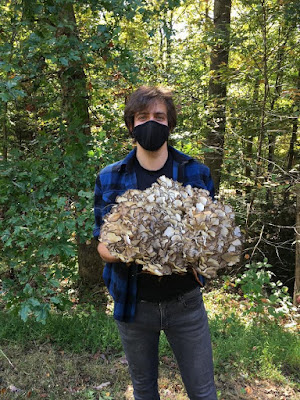Cow parsnip is indigenous to North America and is enjoyed by many Native American communities. This plant is used medicinally in a wide variety of ways and eaten as a green vegetable. This is somewhat surprising because Native Americans had to transform the plant into food by reducing its toxic characteristics. As a food source, it is very important to communities living in northwestern North America.
About Cow Parsnip
This plant is a hardy perennial herb of the celery or umbel family and consists of more than sixty species that are native to North America. It can be found throughout America with the exception of the Gulf States. It ranges from Alaska to Newfoundland, south as far as Georgia, and west to California. Cow parsnips grow from a taproot or cluster of roots to a height of three feet at maturity The leaves are quite large, they have three segments divided into lobes and are coarsely toothed. The stems and lower leaves are hairy. The flowers or umbels are flat on top with clusters of small white flowers. Flowering time is from June to August depending on the elevation. The fruits are white in color and have an oval shape that is flat and winged. Cow parsnips grow in clusters and can be found along streams, in moist meadows, thickets, and clearings. The genus name, Heracleum refers to the size of the parts of this plant, especially the leaves. The fresh foliage can cause dermatitis. If the juice and hairs of this plant are left on the outer skin it will cause blisters because it contains furanocoumarins.

Medicinal and Culinary Uses
The stalks of this plant were gathered in the spring from early April through late June before flowering occurred and eaten as a green. Once budding started, this plant was considered no longer good for eating because it got very bitter. It was the primary green of Alaskan Native Americans with some communities like the Sechelt people traveling long distances to forage for this herb. It was noted that the stalk could cause skin irritations so the stems were often split and the inner portion was pulled from the skin of the plant and eaten raw. Sometimes the stalks were heated in a fire by the Blackfoot, Gitksan, and Kootenay, before being peeled. The Kari and Ksan people chopped and cooked them in a stew. Sometimes they were stewed in sugar and served as a dessert. Another way they were prepared was in a stew served with meat. The Kaigani Haida picked and peeled the stems and packed them in grease and stored them for use in the winter.

Cow parsnip was used to treat a wide variety of medicinal complaints. Interestingly enough even though it is a skin irritant it is used as a poultice. The Bella Coola made a compound of roots to treat hip pain and a poultice of crushed boiled or baked root was applied to boils. The Blackfoot used an infusion of young leaves to treat diarrhea. The Chippewa make a poultice of the dried flowers and boiled roots to treat boils; the root was also held on a sore tooth to treat a toothache. The Cree Woodlands make a poultice of the ground root, calamus, and yellow pond lily to treat headaches. The Haisla made a poultice of the roots, Indian hellebore, and Sitka pine pitch and applied the mixture to wounds. The Gitksan combine the cow parsnip root with red elder and juniper boughs and used it as a smudge against witchcraft victims. The Makah heated a poultice of leaves and used it to treat eye problems. The Menominee used it as a hunting medicine in the form of a smudge. The Iroquois made a compound infusion of this plant for a bath to treat headaches. The Shoshoni combined a decoction of the root with whiskey and took it like cough medicine. The Salish Coast mixed the boiled root with dogfish oil and put it on their hair to make it grow. The Winnebango smoke the plant to treat fainting.

Did You Know...
This plant is not to be confused with a parsnip.
The flavor of a young stalk tastes somewhat like celery.
A yellow dye can be obtained from the roots.
Other names for cow parsnip are Indian celery, Indian rhubarb, or pushki.
Among the Nootka and Nitinaht people, pregnant women were warned not to eat the flower bud stalks because it was thought that it would make the baby choke.
The root contains psoralen which is being researched for use in the treatment of psoriasis, leukemia, and AIDS.














